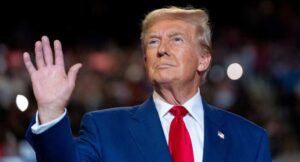Public Wi-Fi hotspots seemed like a good idea five years ago when the government rolled out a scheme to provide affordable internet nationwide through a network of neighbourhood data providers. High-speed 5G network services hadn’t been rolled out yet, and Wi-Fi was still the most reliable way to access the internet.
However, the Prime Minister Wi-Fi Access Network Interface (PM-Wani) scheme has been struggling to take off as key stakeholders argue over the tariffs.
The government has now proposed that telecom operators offer bandwidth at low rates to neighbourhood stores and other retailers deploying Wi-Fi hotspots under the PM-Wani scheme, but the telcos see these so-called public data offices, or PDOs, as competition.
“They are buying the service (bandwidth) for reselling. Why should any operator be forced to provide its network services to its competitors at the arbitrarily regulated prices for building their network,” Ravi Gandhi, president and chief regulatory officer of Reliance Jio, told the Telecom Regulatory Authority of India (TRAI) during a recent discussion. Mint was present at the discussion.
TRAI, in its recent draft telecommunication tariff (71st amendment) order, proposed that telcos do not charge PDOs more than double what they charge retail customers for fiber-to-the-home (FTTH) services.
Jio, in a written submission to TRAI, estimated that if the reduced tariff rate order is implemented, a PDO could get unlimited data at ₹798 from telecom operators and sell at least 1 GB (gigabyte) of data each to 1,000 customers every month at ₹10 per GB.
Telecom operators, which charge about ₹19 for a 1 GB mobile data pack, could lose their users.
In September, the department of telecommunications amended the PM-Wani framework, removing the requirement for PDOs to enter into commercial agreements with telecom operators for internet connectivity.
This was done to ensure that telcos do not force PDOs to get bandwidth through expensive internet leased lines but a regular FTTH broadband connection, which telcos are not keen on.
‘Not in competition’
The government had aimed to deploy about 10 million public Wi-Fi hotspots across the country by 2022, and 50 million by 2030. However, only about 280,000 hotspots have been deployed so far, and nearly half of those are in Delhi, per government data.
As on 5 December, the number of unique PM-Wani users was 1.8 million, and a total 58.55 PB (petabytes) of data had been consumed, the data showed. One PB is about 1 million GB.
Broadband India Forum, which represents big tech companies, blamed the dearth of public Wi-Fi hotspots in India on ‘predatory pricing’ by telecom operators. It claimed telecom operators were charging up to ₹8 lakh per annum from PDOs for providing bandwidth.
“This PM-Wani architecture is not in competition with telcos, it is complementary to them,” T.V. Ramachandran, president of Broadband India Forum, said at the TRAI meeting. “It will add value to the mobile operators… PM-Wani is an important element of digital public infrastructure where affordability and usability is a key requirement.”
Ramachandran argued that for small entrepreneurs deploying Wi-Fi hotspots, broadband tariffs need to be the same as retail FTTH tariffs.
While PDOs provide data sachets to users at ₹5-10 per day under the PM-Wani scheme, they have been arguing that this is not viable due to the high tariffs charged by telecom operators.
There are more than 200 public data office aggregators operating in the country, according to the PM-Wani central registry.
Rahul Vatts, chief regulatory officer at Bharti Airtel Ltd, said tariff intervention would reverse years of consistent policy that had favoured tariff forbearance (allowing telecom operators to fix their own charges) and market-driven innovation.
“FTTH is a retail product and not meant for resale. PDOs operate as commercial resellers serving multiple end users simultaneously and demanding consistent bandwidth, reliability and network management that FTTH is not engineered for,” Vatts said at the TRAI meeting.
As per PM-Wani data, about 45% of the public Wi-Fi hotspots deployed under the scheme so far are in Delhi. “We realised that the deployment has not really been in the rural sector. It’s been considerably invested in the urban sector,” said Ambika Khurana, chief regulatory officer, Vodafone Idea, which only recently began rolling out its 5G services. LiveMint









